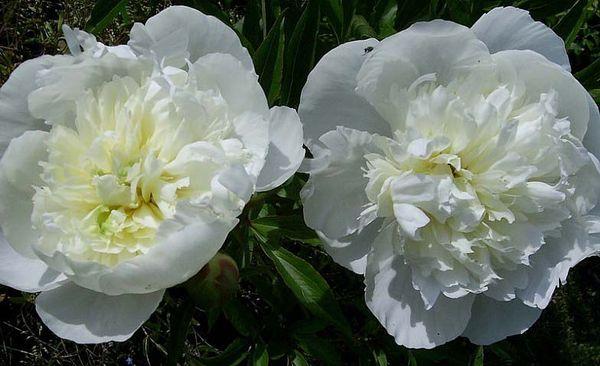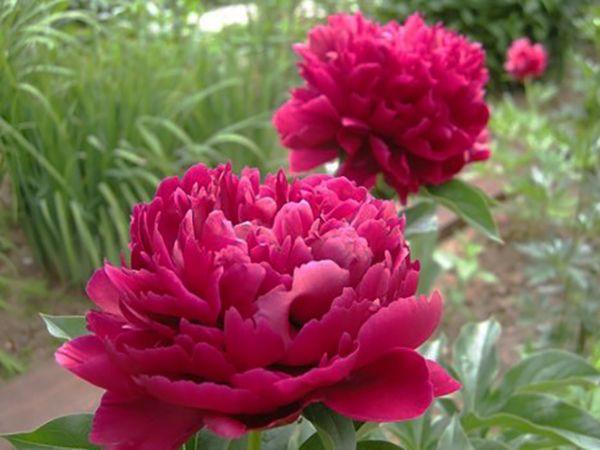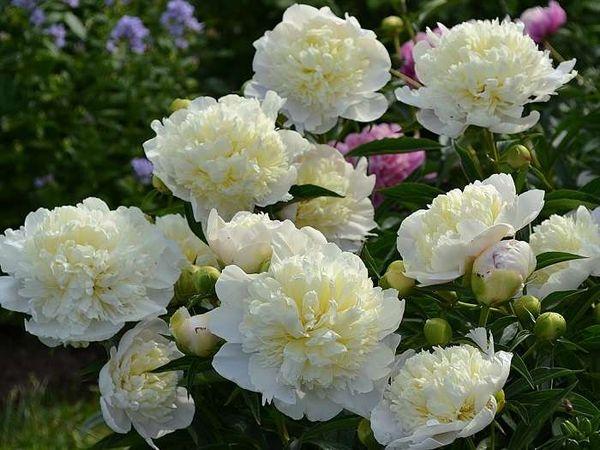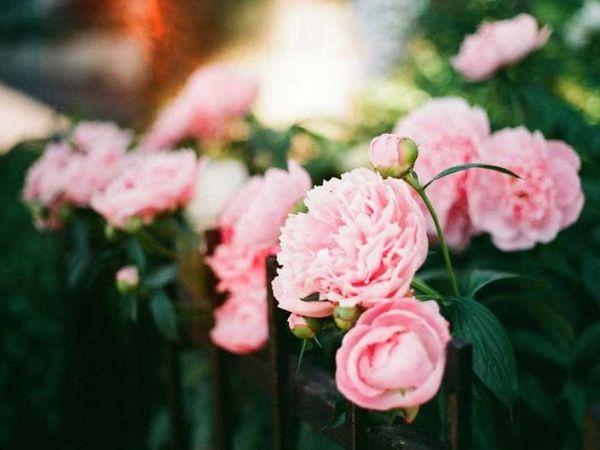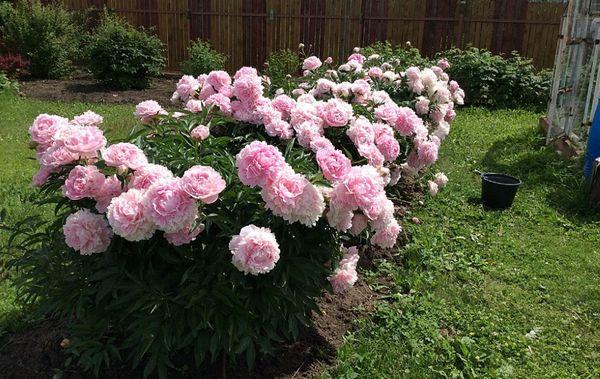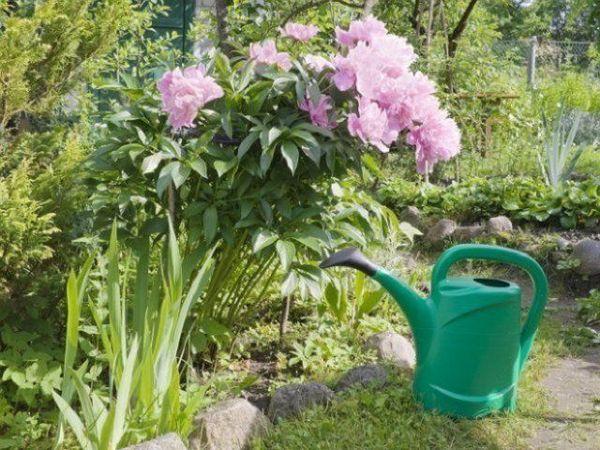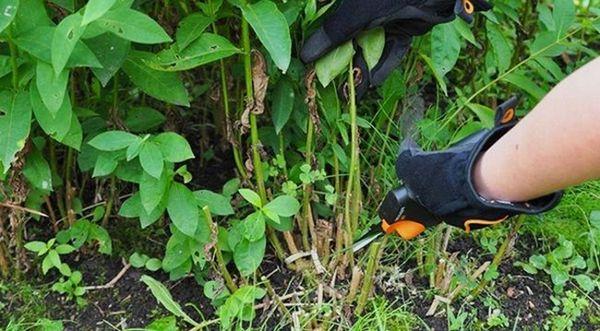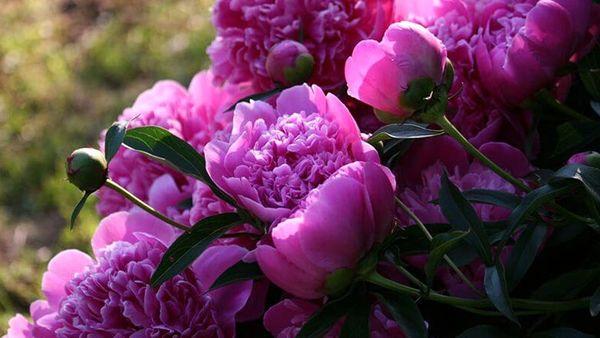The perennial, which serves as a symbol of the Celestial Empire, is planted in Europe and cultivated in Asia and North America. Peonies bloom in one place for decades. There are about 50 species of ornamental plants, which are unpretentious and quickly adapt to different climate conditions.
- Types of peonies by ripening time
- Very early
- Early
- Mid-early
- Average
- Mid-late
- Late
- Very late
- Why don't they bloom
- Age
- Landing location
- Violation of agricultural technology
- Too little green mass
- Nutritional deficiencies
- Too much fertilizer
- Abundant flowering in the previous season
- Lack of light
- Causes of poor or scanty flowering
- Diseases
- Too acidic soil
- Lack of moisture
- Improper care
- Failure to comply with planting deadlines
- Undeveloped root system
- Excessive pruning
- Rules of care
- Watering mode
- Transfer
- Loosening and weeding
- Top dressing
- Trimming
- Preparing for winter
- Protection from diseases and pests
- Basic mistakes
- Violation of the technological cut
- Removing faded flowers but leaving petals
- Preservation of a large number of lateral buds
- Tips for flower growers
- When and how to cut
- Treatment of diseased leaves
- Influence of weather conditions
- What year do they usually bloom after planting?
- When do they usually bloom?
When peonies bloom, the garden is filled with a delicate aroma, and you can watch the stunning spectacle for a long time. Plants come in early and late varieties, both of which delight with beauty.
Types of peonies by ripening time
The flowering time is affected by the variety of ornamental perennial, the climate in which it grows, and care features.
Very early
In American hybrids, surprising with double buds or a magnificent crown of petals, the decorative period begins at the end of May. The Velma variety has reddish stems and large lilac caps.
Early
In the first ten days of June, the Pearl Placer blooms. The peony sends out many shoots, growing up to 80 cm in height. The pearlescent shade of the petals at the ends turns into a dark pink color.
At the same time, the hybrid variety America pleases with scarlet flowers with golden stamens.
Mid-early
Until June 15, the buds of the Mirage peony bloom. Raspberry petals change shade in different lighting and smell like jasmine.
The Duchess variety, created by French breeders many years ago, continues to amaze with its airy snow-white flowers about 20 cm in diameter.
The Miss America peony bush is spherical in shape.The plant tolerates frost well, blooms buds in early June, large pure white flowers with yellow stamens look like chamomile.
Average
Light pink petals with an edge of the double peony in Memory of Gagarin open in the middle of the first summer month. Then the dark burgundy buds of the Sable variety appear.
Mid-late
After June 25, double spherical Anchatress peonies bloom, collected from lemon petals, decorated with a thin scarlet border. At the end of the month, the John Peyton variety blooms lilac buds.
Late
In the thirties of June, the spreading peony Arkady Gaidar with leaves decorated with scarlet veins blooms. Gladys Taylor pleases with dark pink terry balls.
Very late
In July, the snow-white flowers of the Swan variety open, and the fragrant Adonis with golden with reflections on the petals, Moon River amazes with its delicate terry caps, decorated with blush.
Why don't they bloom
The perennial does not form buds, and if they do appear, they dry out and do not open. Novice summer residents complain about such problems.
Age
The plant does not bloom immediately after planting. It takes time to please with its decorative appearance:
- In the first year, the peony adapts to new conditions and stems form.
- Over the next 12 months, the number of shoots increases, the tuber becomes thicker and stronger. Sometimes 1–2 buds appear; it is recommended to pick them off.
- In the third year, the plant forms powerful roots and single flowers.
In a few more seasons, the shade of the petals will change; the peony will not be covered with buds. After a while, the plant will respond to care with a delicate aroma and lush flowering.
Landing location
The site for the peony is selected in the sun.The perennial is uncomfortable when there is a tree or fence nearby; the plant does not take root where water comes close to the surface. The peony does not bloom if it is covered with shade from the sun for only a few hours, or if it is not protected from piercing winds and drafts.
Violation of agricultural technology
The perennial does not please with its decorative appearance when the growing point is deeply buried in the ground. If a hole is dug just before planting, the soil crumbles and drags the rhizome with it. The peony grows and develops normally, but will not bloom.
The growing point should be left at a distance of 4–5 cm from the soil surface. If you don’t deepen it at all, the buds freeze out in the cold winter.
Too little green mass
In the absence of watering during prolonged drought and heat, the leaves dry out and fall off, and the peony does not have enough strength to form buds.
Nutritional deficiencies
In order for a decorative perennial to delight with lush flowering, the bush needs phosphorus. With an insufficient amount of this microelement, as with potassium deficiency, the buds set poorly or dry out.
Too much fertilizer
Nitrogen promotes the growth of green mass, which takes nutrients from the bush. If there is an excess of the mineral, the perennial may not form buds.
Abundant flowering in the previous season
In order for peonies to delight with delicate caps, for the first 2 years you need to prevent the plant from forming buds or tear them off. The bushes spend a lot of effort on abundant flowering, restoration requires a large amount of nutritional components, and the soil is depleted.
If there is no feeding and pruning next year, the peony will not please with its decorative appearance and will not decorate the flowerbed or garden.
Lack of light
The plant loves the sun, and if direct rays do not fall on it for just a couple of hours a day, the perennial does not produce buds.
Causes of poor or scanty flowering
Peonies do not always please with a large number of balloons made of delicate petals with a unique aroma.
Diseases
The plant is resistant to pests, is not afraid of insects, but is affected by fungi, which when activated causes:
- rust;
- gray rot;
- verticillium;
- mosaic;
- powdery mildew.
The leaves of peonies become covered with plaque, stripes or spots and dry out. Even if the plant manages to produce buds, it blooms very sparingly.
Too acidic soil
Perennial needs large amounts of phosphorus and potassium. In order for a plant to please with its decorative appearance, it needs slightly alkaline nutritious soil mixed with humus. Peonies do not tolerate soil with high acidity; to reduce it, lime is added to the soil.
Lack of moisture
If an ornamental plant is planted in dry soil and not watered regularly, it will not be able to absorb nutrients from the dried soil. The buds that appear do not have enough strength to bloom profusely.
Improper care
Although peony is considered an unpretentious plant, it is necessary to take care of it - irrigate, feed, and prune. If this is not done, the perennial loses its decorative appearance.
Failure to comply with planting deadlines
When peonies are sent into open ground too late, the bushes freeze and it will take a long time for them to move away.
Undeveloped root system
If an adult peony is not properly cared for, the decorative flower grows, stretches upward, the buds become smaller and weaker, since the perennial lacks nutritional components, and the root system develops poorly.
Excessive pruning
To form a beautiful crown, peony shoots are shortened, but you should not be too zealous. The plant will not bloom profusely when it has few leaves, which is observed when cutting branches by a third.
Rules of care
In order for peonies to be dotted with exquisite caps of pink, red or snow-white petals for at least 10–15 years, the bushes must be fed, pruned, disease prevention carried out, and prepared for winter in a temperate climate.
Watering mode
Peonies need to be irrigated abundantly; once a week is enough. 2 buckets of water are enough for one plant. During flowering, the perennial needs to be watered less. Peony is most demanding of moisture when buds form and buds form.
Transfer
Wild varieties of ornamental plants feel comfortable in one place for a very long time; hybrids stop blooming after 12 years because the roots grow strongly. To avoid damaging them during transplantation, the bush is dug up with a pitchfork from all sides and removed from the ground. The peony is shaken off the soil, kept in the shade for 5–6 hours, and then placed in the soil. In the first season, all the buds are cut off; in the second year, one or two are left.
Loosening and weeding
The roots of the flower will develop only with a sufficient amount of nutritional components and access to air. After watering and rain, the soil in the flower bed needs to be loosened, otherwise it will form a crust. To prevent weeds from drowning out young bushes, you need to weed the flowerbed regularly.
Top dressing
During planting, fertilizers are applied, which is enough for the perennial until it begins to bloom. In the third spring, the bushes are watered with potassium permanganate, mixing 2-3 g of powder in a bucket of water. Peonies need both organic and mineral complexes.After flowering, the bushes are fed with mullein or bird droppings, which helps strengthen the roots. In August, fertilizers containing potassium and phosphorus are applied.
Trimming
It is not recommended to shorten the shoots of peonies immediately after flowering, so that the plant does not get sick. It is better to do this at the end of June; do not touch the leaves, but cut off part of the stem and the dried bud. Dry and broken branches of tree-like varieties are removed in April, healthy shoots are shortened after buds open. Herbaceous peonies are pruned in October.
Preparing for winter
In late autumn, the flower stems are shortened, leaving up to 2 cm from the stump. In temperate climates, the plant is covered for the winter:
- spruce branches;
- compost;
- peat;
- sawdust.
Do not use cut branches as mulch because they harbor insect larvae. Tree peonies provide insulation only in areas where strong winds blow in winter and there is no snow. The shoots are bent to the ground and covered with spunbond and agrofibre.
Protection from diseases and pests
To prevent fungal damage to the flower, the transplanted plant is dipped in copper sulfate. This drug prevents the development of spotting and gray rot, kills the larvae of caterpillars and scale insects. In the spring, peonies are watered with a solution of potassium permanganate, the roots are soaked in the preparation “Fitosporin-M” before planting. To strengthen the plant's immunity, use the fungicide "Maxim".
Basic mistakes
A perennial does not bloom not only if the rules and timing of planting are not followed, or due to the lack of proper care, but also for other reasons.
Violation of the technological cut
Summer residents sometimes greatly shorten shoots to give the bush a beautiful shape. An ornamental plant does not have enough strength to form buds if there are less than 3 leaves on the shoot when cut.
Removing faded flowers but leaving petals
Pathogenic microorganisms provoke the development of diseases in which both shoots and greens dry out. Fungal spores and pest larvae thrive in the petals, so they need to be collected and burned.
Preservation of a large number of lateral buds
Although peonies are unpretentious plants, any mistake in care leads to the fact that the perennial loses its decorative appearance. The peony will not have enough strength for abundant flowering if you do not cut off the side buds, the development of which requires nutrients.
Tips for flower growers
In order for a perennial to delight with its beauty, the plant must be fed, watered in a timely manner, and the bush must be formed correctly.
When and how to cut
It is not recommended to leave the buds for the first 2 years, then the plant will delight you with its beauty in the third season. To keep the flowers in the vase longer, the branches are cut off with sharp pruning shears early in the morning or after sunset.
Treatment of diseased leaves
Plants suffer from fungal infections and are affected by viruses. Pathogenic microorganisms are transmitted through gardening tools; spores and larvae form in the petals. If the leaves on the bush begin to turn yellow, the plant is treated with a solution of potassium permanganate or fungicides.
Influence of weather conditions
If it is warm outside and there is no rain, the flowering of the perennial lasts 10-12 days; in the heat, which in the south begins in May, the petals fall off faster and the decorative period is shortened.
What year do they usually bloom after planting?
Peonies produce 2-3 buds already in the third season. It is recommended to cut them off, since the bush does not yet have enough strength to please with lush balls.Abundant flowering begins in the 4th–5th year, but for this you need to choose a sunny place for planting, regularly feed and water, and prune the plant correctly.
When do they usually bloom?
On early peonies, the buds open in May, and if the weather is favorable, the petals fall off ten days later. Late spherical varieties of perennial plants bloom after June 25 and delight with sophistication and beauty until July 5.

